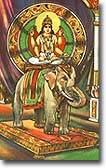
All the demons became so impressed by him that they stopped worshipping Lord Shiva and became his disciples.
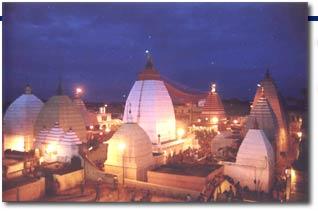
Baidyanath
Truth(Satya) is God(Shiv) and God(Shiv) is Beautiful(Sundar). This blog represents my passion and longing for the Beauty of God in Truth, the Beauty of Shiva, the Ultimate Truth of Realisation, the Most Gracious among the Graceful. To Him I bow, Who is born of none, Who is God of Gods, Who is giver of boons, Who is the conqueror of death, Who was, is and shall be even after eternity, Who is in me and me in Him.


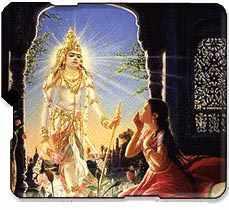
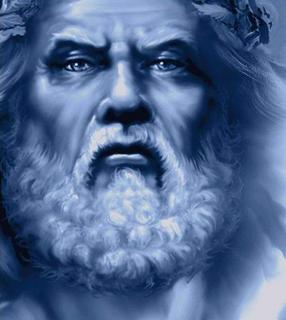 Significance of Jupiter.
Significance of Jupiter.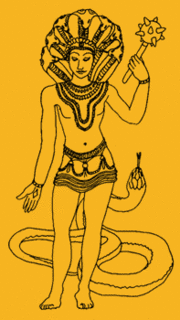
 If one looks at the life of Shiva, he is apparently the most unsuitable groom one could ever imagine.
If one looks at the life of Shiva, he is apparently the most unsuitable groom one could ever imagine.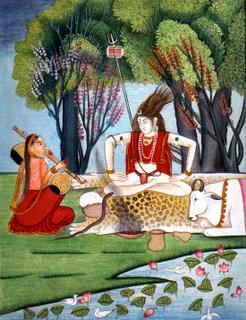 Infact, it is welknown that during marriages, a couple is blessed to be like the cosmic couple of Shiva and Parvati. None is blessed to be like Vishnu and Lakshmi or Brahma and Saraswati. The main reason being that although completely unlike each other, the love and passion between Shiva and Parvati is incomparable.
Infact, it is welknown that during marriages, a couple is blessed to be like the cosmic couple of Shiva and Parvati. None is blessed to be like Vishnu and Lakshmi or Brahma and Saraswati. The main reason being that although completely unlike each other, the love and passion between Shiva and Parvati is incomparable.
Kuber, the worshipper and friend of Shiva
ACCQUIREMENT OF SHIVALINGAS BY THE DEITIE
Once, Brahmaji went to 'Kshirsagar' (the abode of Vishnu) accompanied by the deities and asked lord Vishnu how a man could be liberated from his sorrows. Lord Vishnu told them that this objective could be met b worshipping Shiva-Linga.
All the deities, then prayed to lord Shiva, who after becoming pleased instructed 'Vishwakarma' to construct a Shivalinga for them. Vishwakarma then made a Shivalinga for Kuber, a Shivalinga of yellow diamond for Dharmaraj, a Shivalinga of dark coloured diamond for Varun, a Shivalinga of Indraned diamond for Vishnu and a goldden Shivalinga for Brahmaji. Similarly Vishwadeva was given a Shivalinga made up of silver, the Ashwini Kumars were given Shivalinga made up of bronze, Laxmi was given a Shivalinga made up of Crystal (Sphatik), Sun-god was given a Shivalinga made of copper and the moon was given a Shivalinga made of pearl.
GUNANIDHI - THE BRAHMINS' SON
Narad asked lord Brahma, when did lord Shiva make Kailash as his abode and what was the reason of friendship between Shiva and Kubera.
Brahma then went on to narrate the following story:Once there used to live a brahmin by the name Yagyadutt in Kampilyanagar, who was proficient in the performance of Somyagya. He had a son named Gunanidhi. Though he was a scholar but at the same time he was irreligious and kept bad company. He used to indulge in evil activities like gambling.
His father - Yagyadutt was unaware of his evil activities. Whenever he asked his wife about Gunanidhi habits and conduct, his wife used to tell lies and praised the conduct of Gunamidhi. Thus Gunamidhi's condition became worst day by days.
Yagyadutt married Gunanidhi with a girl belonging to a well to do family. But his habits had not changed. His mother tried her best to make him understand, but it was of no avail.
One day Yagyadutt saw, a gambler wearing his ring. He asked him about that ring. The gambler told him that his son - Gunanidhu had lost it to him, in the gamble. He also informed him that he had also lost numerous ornaments and other properties in the gamble.
Yagyadutt became very angry. He married with another woman after abandoning his wife and son.
GUNANIDHI'S SALVATION
When Gunadhi came to know about his father's second marriage, he moved to another place, cursing his fate. He kept on walking till he became tired. He sat under a tree and started thinking about his further course of action. He heart was full of remorse and he repented for his past actions. As his mind was engrossed in such kind of thoughts. He saw somw villages going towards temple. They were carrying prasad in their hands.
Since Gunanidhi was hungry, he followed them and after reaching the temple he sat at the main gate of the temple. IN the night, after the accomplishment of the Pujan, the devotees went to sleep. Gunanidhi entered the premise went to sleep. Gunanidhi entered the premise of the temple. The flame of the lamp was gradually becoming dim as the result of which he could not see properly. He tore some pieces of cloth, he was wearing and made a thick wick and put it in the lamp. Now the light was sufficient to enable him to see whatever had been offered to the deity.
He carried as much fruits and other eatables as possible and tried to sneak out from the temple. Unfortunately, he dashed against a devotee woke up and chased him shouting thief-thief.
Hearing his cries all the other devotees woke up and caught Gunanidhi. He was given such a nice thrashing that proved to be fatal and as a result Gunanidhi died.
The Yamadutas arrived to take his soul to yamloka. But right then, the Shivaganas arrived and prevented the Yamadutas from carrying his soul. They informed the Yamdutas that Gunanidhi was entitled for Shivaloka as he had devoutly observed the Shivaratri fast, had listened to the tales of Shiva and lighted up the lamp which was about to go off. The Shivaganas also informed the Yamadutas that, in his next birth Gunamidhi would become the king of Kalinga.
In this way Gunanidhi attained to Shivaloka. In his next birth he was born as a son of king Arindam- the king of Kalinga. He was named as Dama. When he was still young, his father Arindam dies. So Dama succeeded him as the king of Kalinga. He renovated all the Shiva-temple, which came under his jurisdiction and passed a law which made the worship of lord Shiva compulsory for all the subjects. By the blessings of lord Shiva, he became the king of Alkapuri and was known as Kubera.
SHIVA BLESSES GUNANIDHI
During the Padma kalpa, Sage Vishrawa was born to sage Pulastya- the manasputra of lord Brahma. Vishrawa's son - Vishrawan ruled over Alkapuri for a long time. This city was constructed by the deity Vishwakarma. Vishrawan was a great devotee of Lord Shiva. During the kalpa named Meghawahan, Gunanidhi did a tremendous penance for ten lac years. As a result of this penance his body was reduced to skelton.
Lord Shiva became very pleased with him and appeared before him, accompanied by his consort Parvati. He told Gunanidhi to ask for any boon, which will be fulfilled. When Gunanidhi heard Shiva's Voice he opened his eyes, but his eyes were dazzled by the sheer radiance of lord Shiva. He requested Shiva to restore the power of sight in his eyes. Shiva blessed him, as a result of which he was now able to see the divine sight of lord Shiva. But he became jealous of Uma, who was present by the side of Shiva. He was wondering as to who was this lady, dearer to Shiva than him. He glanced cruelly towards her. As a result of this his left eye lost the power of sight. Parvati asked lord Shiva as to why was this sage (Gunanidhi) looking cruelly towards her. Shiva replied- He is none other than your son. He is looking at you in astonishment as he his bewildered at the feats achieved your penance. Lord Shiva then blessed Gunanidhi to become the king of the kings. He also assured him that he will always be present in the vicinity of Alkapuri. After being blessed by Shiva, Gunanidhi also made salutations to Parvati.
Parvati said-
Since you have looked at me angrily your hatred and enemity (Bair) towards me was clearly visible. For this reason you will be known as Kubers. After blessings, Gunanidhi both Shiva and Parvati to a place called Vaishveshwar. Kailash mountain was situated near AlkaNagri.
SHIVA GOES TO KAILASH
When Rudra - the Ansha of the Almighty brahma, heard about the tremendous penance, Kubera was doing he started to play his 'damaru' (drum), the sound of which reached all the three worlds. Rudra then reached the place where Kubera was doing penance.
Hearing the sound of his damaru, all the deities including Brahma, Vishnu and Sadashia appeared before him.
When Kubera saw lord Rudra before himself, he offered his seat to him and worshipped him. He also worshipped the other deities. Rudra was so pleased with Kubera that he decided to stay near him. He called Vishwakarma and ordered him to conduct his abode at Kailash mountain, so that he could live in could live in the vicinity of his great devotee-Kubera. Kubera constructed a beautiful city as per his instruction. An auspicious moment was chosen and Shiva went to live at Kailash mountain. He was coronated by the deities.
Brahamaji in this way told Narada about Shiva's departure to Kailash mountain





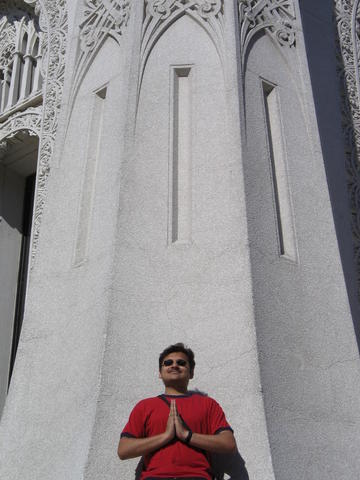
| Supported by website-hit-counters.com . |